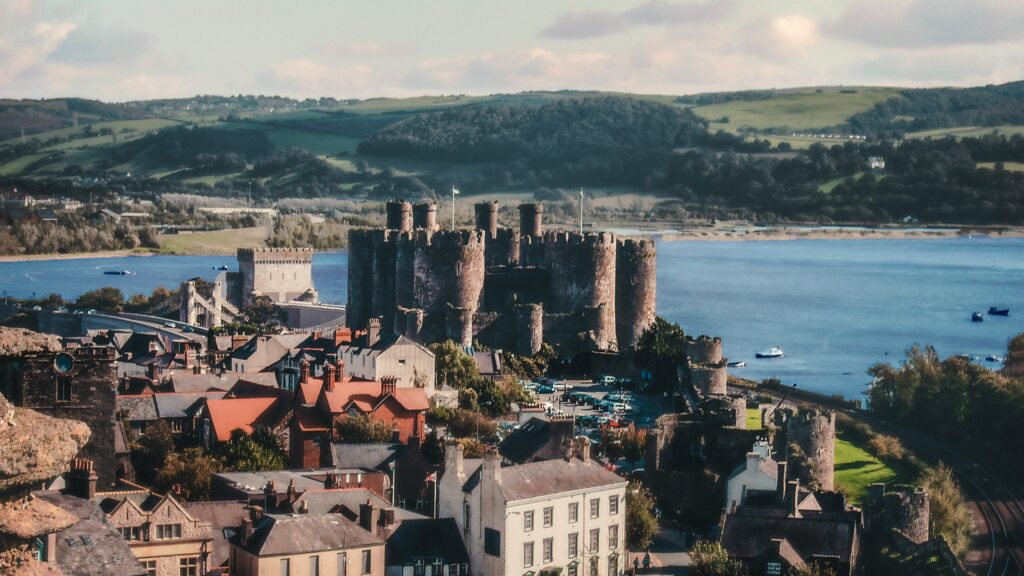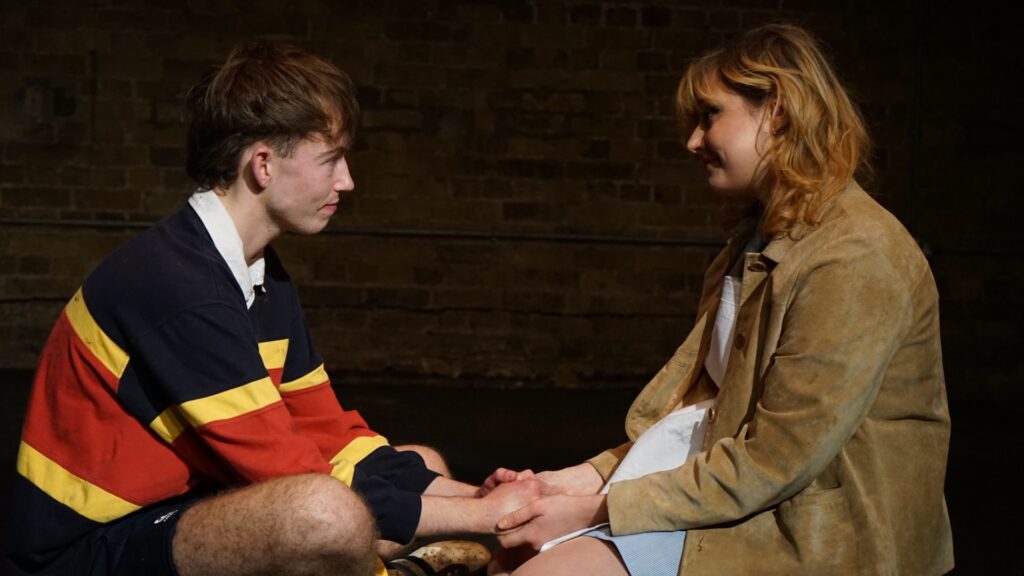Lisa Powell profiles three Rhondda artists who, she believes, deserve wider recognition
Elwyn Thomas, Syliva Lewis and Fred Stapleton are all examples of contemporary artists who, I believe are not receiving the recognition they deserve. All in their different ways are providing us with vivid portrays of their native Rhondda
Elwyn Thomas was born in Tylorstown in the Rhondda Valleys in 1932, and later moved to Trealaw in 1999. In 1953 he became an art teacher, beginning in Rochester Kent School, a boy’s grammar school with high standards, before moving home. He was there for five and a half years before moving home in 1959. When he first started out, Elwyn focused on paintings with colliery machinery reflecting his training as a graphic artist at Art College in Cardiff.
The course was a very intensive one lasting four years for which he gained a scholarship. Initially, Elwyn wanted to be an engineering draftsman but doing this course changed the direction of his career plans. Elwyn went to Cardiff School of Art which by 1949 became known as Cardiff College of Art. Elwyn studied alongside other well known painters such as Ernest Zobole and Gwyn Evans. Zobole was a mature student as he had been in National Service. Elwyn and Zobole remained in contact with one another, whilst progressing in their careers. Elwyn admired Zobole’s work, particularly his street scenes.
In 1959 Elwyn became Head of Art at Ferndale Grammer School where he stayed until his retirement in 1987. Zobole had also applied for this same job, so Elwyn’s success in getting theappointment was quite an achievement. He only really began painting following his retirement from full time teaching. Working mostly through the medium of acrylic, Elwyn will also paint in water colours and mixed media.
His work portrays the life of the Rhondda Valleys using sombre colours. He introduces acrylic into watercolour to create a varied effect. However, he mainly uses acrylics because they are easier to work with being water-based rather than oils. At one time Elwyn used to use mainly oils as acrylics were not on the market at first.
Like most other local painters Elwyn acknowledges the attraction that the painter has towards the physical features such as the shape of the streets, especially in Rhondda Fach. The winding of the narrow Valley with the rows of terraced houses are the main focal point of his work.
Elwyn was influenced in his earlier years by graphic artists such as Eric Ravilious, John Farley and Honore Daumier in terms of their their technical textural quality. Elwyn did his diploma in wood engraving and was therefore interested in methods of production and lithography as a print method. He is fascinated by the work of Lawrence S. Lowry who paints people in busy urban areas rushing in and out of factories.
Elwyn would usually start a painting early in the morning and it would be virtually complete by the end of the day. He therefore works spontaneously and ensures direct painting takes place. His paintings show good perspective with the character of the terraced housing prevalent and as a main feature of Elwyn’s paintings. These physical features are clearly a special interest to Elwyn, as well as excellent linear perspective in terms of light in his landscapes.
He has exhibited with ‘Pictures for Schools’ on numerous occasions with the National Museum of Wales. He also appeared S4C’s Sioe Gelf a few years ago when he spoke about his art on Rhondda. He has also exhibited at Rhondda Heritage Park, The Washington Gallery, Penarth and the Albany Gallery in Cardiff. Most recently, in July 2011, Elwyn exhibited at The Cardiff Story Exhibition in Cardiff Earlier in 2011 he exhibited in the Nick Holley Gallery in Swansea.
Fred Stapleton is a self taught artist living in the Ferndale and has exhibited at Rhondda Heritage Park and Pontypridd museum. Both Fred and Elwyn have painted outdoors together over the years, which has been an interesting experience for both painters. Usually Fred works from photographs he takes rather than painting outdoors. In comparison, Elwyn tries to use as much as possible a sketchbook in order to build up his paintings in the studio. Elwyn feels sketches are more accurate to work from.
As an amateur painter, Fred has a different technique and is experimentally more cautious than Elwyn and has developed his style slowly over time by mastering new techniques. Fred mainly focuses on the more rural aspects of Rhondda, probably because Ferndale, overlooks Blaenllechau
In contrast Elwyn has grown up in an area of Rhondda which is surrounded by the industrial scenes of slag heaps and pit winding wheels. Doubtless, this also explains why Elwyn uses more sombre colours in comparison to Fred’s more vibrant colours.
Fred uses acrylic and oil on board but uses mainly oil, especially at the beginning of Fred’s earlier paintings. However, Fred does emphasise that like most artists, he does go through phases where he changes his medium. Due to his using oil more than acrylic, his paintings have more texture
Sylvia Lewis was born in Tonypandy and is another self-taught painter. She has also exhibited at the Rhondda Heritage Park as well as at the Parc and Dare, Treorchy, and the Pontyclun Gallery. She learnt from watercolour classes in her local community as well buying art magazines and books. Nonetheless, she comes across as a confident painter whois not being afraid to experiment and this is expressed in her art. You can see the confidence in the paintings with such variety of techniques. For example, she has a much broader palette than Elwyn and Zobole . This is demonstrated in her different interpretations of Rhondda according to the seasons .
Sylvia completed A Level Art as a mature student at Cross Keys College while she was living in Risca. Now that she is retired she has more time on her hands to experiment more and practice, which is why at the moment she is experimenting with portraiture and animals as a subject matter. She has also experimented with Chinese paper and tissue paper. Sylvia once used oils but the paint stripper was beginning to cause health problems and therefore uses watercolours now.
Overall, Sylvia focuses mainly on local landscapes but does take photographs of landscape scenes elsewhere with a camera and then paints at home. This is the same for Fred, but in his case it’s mainly due to the fact that he does not own a car. Sylvia’s approach is very colourful, like Fred Stapleton’s artwork but hers is broader in terms of areas of Rhondda she paints. For example, she has used art to record history by paintings of the old pop factory in Porth that is still in existence now, Rhondda Heritage Park and the town hall in Tonypandy. She therefore does not just focus on Rhondda Fach.
Sylvia admires painters such as Turner who uses light in landscapes effectively. She explained that there are not many local artists that have influenced her because they are so dark and dreary in their expressions of the Valleys. Sylvia also recognises that it is very tempting as a painter to stay in your own comfort zone by limiting style and techniques, which then results in most of your work looking more or less the same. However, she does recognise that every painter does develop over time and slightly change their artwork. In the case of Zobole however he dramatically changed his style during the ‘Blue Period’ where he went very abstract with the influence of Chagall.
These artists have provided us with a mixed interpretation of the Rhondda Valleys. Some portray the industrial past through a nostalgic lense. Others simply choose to interpret post-industrial Rhondda as it is today, green again. In the main these painters simply paint what they see through their windows.










Dear Lisa – for such is the Australian way
Elwyn Thomas is certainly hugely underestimated as an Artist- indeed I think of him as being a Welsh L.S Lowry- his drawing is excellent but much more than representation- he KNOWS the Rhondda.
I am currently writing a series of essays on the theme of Silence in Painting – Chardin- the Silence of the Line; Rothko – the Silence of Colour; LS Lowry – theSilence of Memory ; Antioni Tapies- the Silence of the Mark. I would hope that Elwyn would consent to a LOWRY /THOMAS Essay-
[ I have an extensive professional background in the Visual Arts with Art History at University level -together with my work as a Painter — will you please let me know what has been WRITTEN about Elwyn’s work =- where I can access it – and who has written it. – also Gallery Catalogues which might be available.]
So – I wish to write something too -although now a quite Ancient 81 yrs of age- 40 yrs in OZ- since I too know the Rhondda,Ferndale so very very well – i went to Ferndale Grammar School in 1943 ,the Art Teacher was Eurfron Thomas who had a great interest in Art history – a lovely,stimulating teacher.
What is that phrase -‘ You may leave the valley – but the Valley never leaves you– anyway who would want such a thing.
But Elwyn needs some writing.
So Lisa – Da iawn
Gareth Morse
There is nothing written about Elwyn anywhere and yet he was one of the Rhondda painters along with Zobole etc who were well known and yet he never gets promoted. Lots of local talent not pushed. Elwyn has been inspired by Lowry. I am sure it is in my article. Glad you liked the article.
Dear Lisa,
I was very interested to read your blog, specifically about Elwyn Thomas. I did however notice quite a large piece of information missing from you research. Elwyn Thomas is a current contributor and best selling artist at Giles Gallery in RCT, his work is sold nationally from Giles Gallery and has been for almost 7 years.
Elwyn regularly holds solo shows of his work including one of previously unseen work from a visit to his brothers home in Australia that he did on location. Elwyn is currently working on a collection of new pieces, encouraged by his involvement in the relocation of Giles Gallery to new premises.
I hope this has been of some interest to you.
Sincerely,
Miss. Beth Giles